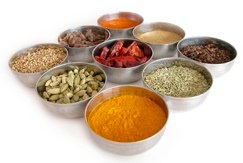Western-based healing sciences, like naturopathic and chiropractic medicine, point to the long and effective use of herbs as potent yet safer alternatives to drugs. Herbs are used much the same way as a drug might be: a specific herb is prescribed based on its ability to affect a particular symptom or condition. In most instances, western-based natural medicine relies on the biochemical properties of that herb in much the same way allopathic medicine relies on the chemical properties of pharmaceuticals.
Traditional Chinese herbal medicine (TCM), however, uses an entirely different approach when classifying and prescribing herbs. TCM uses an herb based on its “energetic” properties” – meaning how it will affect the life energy or “chi” of the patient. In oriental medicine, illness and disorders arise from imbalances in a patient’s energy flow or chi.
The key to using Chinese herbal formulas is a skill called “pattern discrimination,” a method of diagnosis that makes oriental medicine completely different from western medicine. Pattern discrimination is a diagnosis of the individual patient’s energy imbalance. A patient’s chi can be too yin or too yang, damp or dry, too hot or too cold, excessive or deficient. The goal of this highly individual diagnosis is to find the root cause of the symptom for each individual
Diagnosing the patient’s energy imbalance is critical in choosing the right herb with the right energetic effect. They can have a yin or yang effect, promote cold or heat, or have an expanding or contracting influence on the body’s chi. Even the taste of the herb – bitter, salty, sweet, sour or astringent – can have an impact on the body’s energy balance. The key is choosing the right herbs with specific energy properties that can best counter the patient’s imbalance.

In oriental medicine, the root cause of one person’s headache may be very different from the root cause of another person’s headache. Rather than prescribe the same set of herbs for every patient with a headache, an oriental medicine practitioner would first make a diagnosis of the patient’s energy. One headache patient could be suffering from “chi excess,” while a second headache patient could be diagnosed with “wind heat.”
Instead of prescribing herbs to treat the symptom of headache, the herbs are chosen based on the pattern of imbalance in each patient. The first patient would receive an herbal formula to calm excessive chi, while the second patient would be given a completely different herbal formula to cool and balance his chi. Both patients are being treated for headache, but since they have different diagnoses showing different energy imbalances, they are receiving completely different herbs.
“Prescribing herbal formulas based on pattern discrimination diagnosis means that the same formula can treat many different conditions, or many formulas can treat the same condition,” says Dr. Frank Yurasek, Assistant Dean of the Acupuncture and Oriental Medicine program at NUHS. “We have herbal formulas grouped by pattern discrimination and actions such as tonifying the chi, promoting circulation, expelling damp, clearing heat, expelling wind, etc…”
Dr. Yurasek explains the advantages of identifying and treating the root cause of a patient’s imbalance rather than just the symptom: “If someone receives a drug for blood pressure, they are usually on that forever. Not so with herbs. With herbs it is like peeling the skin of an onion; we keep on driving toward the center or core of the person’s imbalance in order to effect lasting improvement. It’s highly individualized medicine that always goes for the root cause of the problem.”
There may also be a biochemical component to Chinese herbs as well. “However, that was not what drove this medicine over the centuries,” explains Dr. Yurasek. “The ancient Chinese developed these prescriptions from centuries of observation and trial and error. Since Chinese medicine is the longest continuous medical system in the history of mankind, these pattern diagnoses and herbal formulas were forged in the furnace of human experience. All of their remedies were based on what works. The way they interpreted how and why it worked seems quite different to us.”




0 Comments